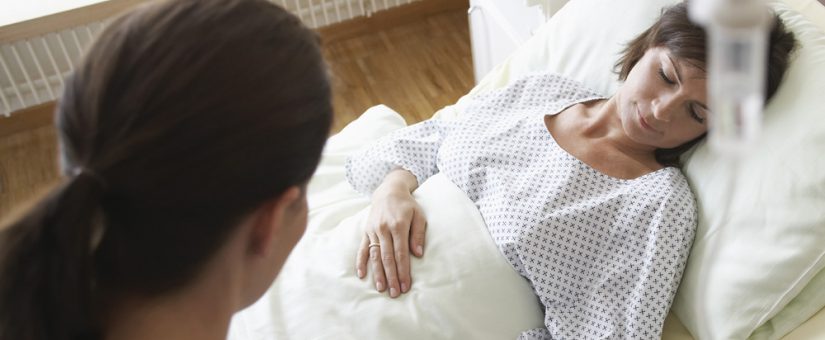According to data compiled by the Centers for Disease Control and Prevention (CDC), approximately 1 in 31 (3.2%) of U.S. hospital patients contract a healthcare-associated infection (HAI). This amounts to approximately 2 million nosocomial infections per year in the US, resulting in 90,000 deaths and incurring a cost of $28- $45 billion to hospitals, Medicare/Medicaid, health insurance providers, and patients.
Patients in healthcare facilities are often particularly vulnerable to infections due to weakened immune systems and the presence of invasive medical devices such as needles and catheters. Two common, and particularly dangerous, causes of HAIs are methicillin-resistant Staphylococcus aureus (MRSA), and Clostridioides difficile (C. diff).
C. diff and MRSA as HAIs
C. diff presents a unique problem because it is difficult to eliminate through cleaning and often presents in patients immediately following a regimen of antibiotics. In addition, the bacterium forms spores when outside the body. These spores are difficult to eliminate, making remediation of C. diff challenging. The CDC estimates C. diff. accounts for 15,000 of the 90,000 HAI-attributed deaths each year.
MRSA is another bacterium of concern frequently found in healthcare environments. The organism can survive on atypical surfaces such as towels, furniture, and razors. The antibiotic-resistant nature of MRSA makes treating an infection problematic.
CDC considers C. auris a “Global Emerging Threat”
A growing concern in healthcare facilities is the deadly (estimated 40% death rate), multidrug-resistant fungus Candida auris (C. auris). As of April 30, CDC surveillance reports 684 cases of nosocomial C. auris infections in the U.S. thus far in 2019. Patients connected to lines or tubes are especially susceptible to this hard-to-kill yeast. Like MRSA, C. auris can survive and thrive on hard as well as soft surfaces, including human skin, increasing the potential for patient-to-patient transmission.
Plan to Prevent HAIs in Hospitals
Hospital rooms present a complex environment for infection control due to the various types of surfaces to be cleaned and sanitized. Multiple surfaces (textiles, cushions, wood, and metal) may require different sanitizers and cleaning implements. For example, bleach-based disinfectants are lethal to some of the hardiest organisms. However, chlorine is damaging to soft, porous surfaces such as bed covers and mattresses and corrosive to stainless steel.
Add to this the pressure to swiftly turn over rooms for new patients, and the process is conducive to inadequate cleaning. Quick turnover also doesn’t allow time for verifying the cleaning procedure.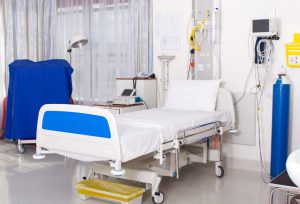
A report issued as part of the CDC’s Preventing HAIs Toolkit entitled, “Options for Evaluating Environmental Cleaning,” states, “all hospitals are encouraged to develop programs to optimize the thoroughness of high touch surface cleaning as part of terminal room cleaning at the time of discharge or transfer of patients.”
Validate and Verify the Hospital Patient Room Cleaning and Sanitizing Program
After designing a room cleaning program hospital personnel must evaluate the procedures to assure they are working. An initial Validation Study and periodic Verification of the cleaning and sanitation program can provide proof of the efficacy of the process. A simple way of defining each step is: Validation involves confirming the facility staff instituted the most effective cleaning methods from the beginning. Verification consists of ensuring the staff members performing the validated cleaning methods are doing so correctly.
A qualified microbiology lab can provide the materials and testing services for the Validation and Verification steps. Depending on the depth of the Validation desired, some studies may involve the inoculation of various points of the test facility with surrogate organisms (similar but not as virulent as MRSA or C. Diff) followed by a cleaning and sanitation procedure. Swabs are taken and tested to see how the procedure performed under know contamination levels.
The laboratory partner may have the surrogate organisms in their library and can execute the cleaning challenge study as part of the Validation. Many labs can also provide training for hospital staff in the correct techniques for aseptically performing environmental swab sampling.
After the Validation is complete, the hospital’s environmental services team should schedule periodic Verification sampling of rooms to monitor the cleaning process.
The CDC recommends a swab sampling program as one of the “Objective Methods for Evaluating Environmental Hygiene,” as part of an HAI prevention program.
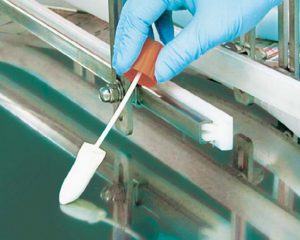 Utilizing swabs to sample surfaces in healthcare environments can be a cost-effective and efficient way to determine if cleaning processes are eliminating threats such as C. diff, MRSA, and C. auris from patient rooms.
Utilizing swabs to sample surfaces in healthcare environments can be a cost-effective and efficient way to determine if cleaning processes are eliminating threats such as C. diff, MRSA, and C. auris from patient rooms.
Other tools for surface sampling could include sponges and Replicate Organism Detection and Counting (RODAC) plates. Air-settling plates and air sampling devices are also useful in determining the overall sanitary conditions of a room.
Hospital Room Cleanliness Check
In “Guidelines for Environmental Infection Control in Health-Care Facilities,” the CDC recommends gathering information and determining parameters before beginning an environmental-surface sampling program, including:
- Background information from the literature and present activities (i.e., preliminary results from an epidemiologic investigation)
- Location of surfaces to be sampled
- Method of sample collection and the appropriate equipment for this task
- Number of replicate samples needed, and which control or comparison samples are required
- Parameters of the sample assay method and whether the sampling will be qualitative, quantitative, or both
- An estimate of the maximum allowable microbial numbers or types on the surface(s) sampled (refer to the Spaulding classification for devices and surfaces)
- Some anticipation of a corrective action plan
To keep the HAI prevention program cost-effective the CDC suggests starting with testing 10-15% of patient rooms and if test results indicate a thoroughness of cleaning rate of >80%, reduce the sampling to a rotating, periodic group of 5% of patient rooms. The CDC provides a list of recommended surfaces to include in the swab sampling program.
Health Care-Associated Infections: Road Map to Elimination
In 2016, the US Department of Health and Human Services initiated the National Action Plan to Prevent Health Care-Associated Infections: Road Map to Elimination, to, “coordinate and maximize the efficiency of prevention efforts across the federal government.” The Action Plan involves collecting data and developing prevention measures across several government and private-sector organizations to reduce the threat of HAIs in hospitals and other care facilities. Oversight of healthcare establishments has increased, and facilities are required to develop a specific plan to address HAIs and document cleaning and validation plans and results.
Water as a source of Healthcare-associated Infections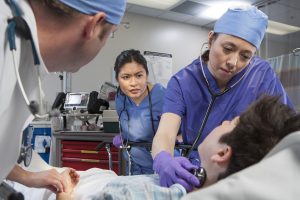
Another source of nosocomial infections can be water. Water-based organisms such as Legionella are particularly dangerous to sick and infirm individuals. Recently, a hospital near Columbus, Ohio discovered Legionella contamination in the facilities hot water system, resulting in 16 confirmed cases of legionellosis and one death.
An article in the June 14 issue of Infection Control Today cites a study by researchers at the University of Michigan Health System who found biofilm and the presence of Pseudomonas aeruginosa, mold, and other environmental organisms inside the faucets of hospital intensive care units. The study also noted many sinks throughout the facility used by personnel to wash their hands were too shallow and resulted in the water splashing as far as four feet onto implements and patients.
Facility water systems should be periodically tested for the overall microbial load and Legionella contamination. A testing program may involve taking water samples from a rotating list of drinking fountains, sinks, shower heads, and other sites and sending them to a qualified lab for testing.
Water in heater-cooler units used during open-chest surgery can potentially harbor Nontuberculous Mycobacteria (NTM), resulting in life-threatening infections for exposed patients. Surgeons use these devices to keep patient blood and organs at a specific temperature during procedures. Testing the water in these devices, and having a qualified lab validate the cleaning process of the units can help prevent these rare but dangerous infections.
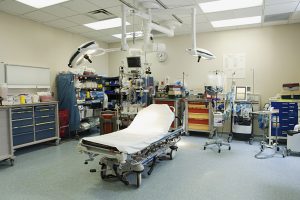 A Thorough Program to Address and Prevent HAIs
A Thorough Program to Address and Prevent HAIs
Healthcare personnel deliver lifesaving and life-sustaining care to patients every day. Life-threatening nosocomial infections can undermine these efforts. Adopting simple and straightforward measures to identify and eradicate potential sources of infection provides a safer environment for patients and gives healthcare workers confidence that the facilities they work in are not a threat to patients.



